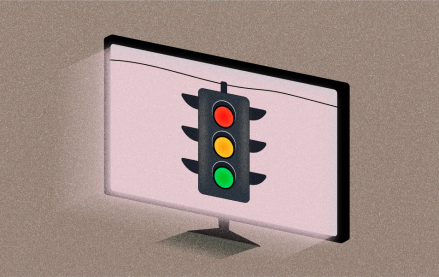How YouTube Shorts revenue compares to long-form video revenue for creators

As a Digiday+ member, you were able to access this article early through the Digiday+ Story Preview email. See other exclusives or manage your account.This article was provided as an exclusive preview for Digiday+ members, who were able to access it early. Check out the other features included with Digiday+ to help you stay ahead
Two years after YouTube launched the YouTube Shorts revenue share program in February 2023, creators are finding that their payouts for short-form content are still dwarfed by the ad revenue they can glean from long-form videos.
Six creators who have traditionally focused on long-form content told Digiday that their RPMs (revenue earned per 1,000 views) for YouTube Shorts were consistently beneath $0.20, compared to average RPMs of between $3 and $6 for their long-form content. It’s worth noting that long-form YouTube videos can carry multiple ads, which would help to boost a video’s RPM, whereas YouTube Shorts revenue is shared among creators based on viewership.
“This month, I had an idea for a long-form video, worked on it all night, and after being live for one week, it had made more money than an entire months’ worth of shorts,” said the “Magic: The Gathering” video creator Maldhound, who asked to keep his real name private to protect his personal information. He told Digiday that his average RPM for 20-to-30-minute long-form videos was roughly $5.50, compared to an average RPM of $0.18 for Shorts.
At the moment, more than 25 percent of channels in the YouTube Partner Program are earning through YouTube Shorts’ revenue share, per a YouTube representative who spoke on background, who added that over 80 percent of the creators who joined the program by meeting its Shorts eligibility thresholds are also making money through additional features such as YouTube Premium and BrandConnect.
YouTuber LordDraconical, who similarly requested to keep his real name private, said that his Shorts content typically garners RPMs of roughly $0.20, compared to around $3.33 for his long-form videos. However, he feels pressured to make Shorts content in order to follow audience behavior and keep up with YouTube’s algorithm, and recently hired a dedicated consultant to help build his short-form presence.
“As we trend towards Shorts being a more and more important part of the algorithm soup, people’s retention on long form content is dropping,” he said, “and I think it’s a real shame I don’t have a good solution for it, other than playing the game — and here I am, making Shorts.”
A dedicated approach
Of the YouTube creators Digiday interviewed for this article, the ones who have achieved the highest RPMs for Shorts content are not traditional long-form creators, but rather more faceless creators who operate dedicated channels built to take advantage of short-form viewership habits from the ground up.
In addition to his long-form channels about juggling and personal finance, for example, the YouTube creator Bennett Santora and his partners operate a network of short-form channels such as AJAnimalKing and StoriezTold. Although the channels’ RPMs hover between $0.15 and $0.30, their quick-hit content achieves tens of millions of views per month, and Santora and his team are satisfied with their Shorts revenue.
“It’s way easier to get views on Shorts,” he said.
Music royalties
One element of YouTube Shorts monetization that has benefited creators is YouTube’s music royalties program, which allows creators to partner with music companies by using their music in Shorts content, padding those videos’ RPMs. Santora, for example, said that he has been able to increase his Shorts’ RPMs by an average of $0.15 by using music from the company Blastoff Media in his content.
The music royalties aspect of Shorts monetization has been particularly beneficial to dance creators such as Dana Alexa and Matt Steffanina, who told Digiday that it has allowed them to generate revenue from content that would have been automatically demonetized for copyright purposes if posted as long-form videos. Although the RPMs are still relatively low — Steffanina said that he typically sees RPMs of about $0.18 for short-form videos — they believe that some revenue is still better than no revenue at all.
“For Shorts, the fact that YouTube seems to be giving a real percentage back to creators is really important,” Steffanina said. “I think a lot of people have been moving from different platforms onto YouTube because of that.”
More in Media

What publishers are wishing for this holiday season: End AI scraping and determine AI-powered audience value
Publishers want a fair, structured, regulated AI environment and they also want to define what the next decade of audience metrics looks like.

Media giant Essence launches a marketplace for Black women-led brands
Essence has launched WeLoveUs.shop, a new online marketplace dedicated to Black women-led brands.

In Graphic Detail: The state of AI referral traffic in 2025
The stats reveal a new audience pipeline forming outside of traditional search and social platforms.








